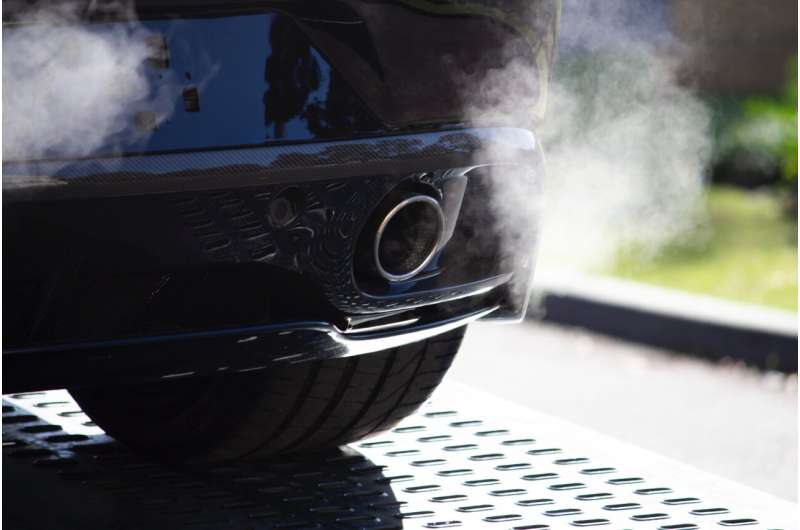This article has been reviewed according to Science X's editorial process and policies. Editors have highlighted the following attributes while ensuring the content's credibility:
fact-checked
peer-reviewed publication
trusted source
proofread
Catalyst can control methane emissions in natural gas engines

A catalyst using a single or just a few palladium atoms removed 90% of unburned methane from natural gas engine exhaust at low temperatures in a recent study. While more research needs to be done, the advance in single atom catalysis has the potential to lower exhaust emissions of methane, one of the worst greenhouse gases that traps heat at about 25 times the rate of carbon dioxide.
Reporting in the journal, Nature Catalysis, a research effort between Washington State University and SLAC National Accelerator Laboratory showed that the single-atom catalyst was able to remove methane from engine exhaust at lower temperatures, less than 350° Celsius (662° Fahrenheit), while maintaining reaction stability at higher temperatures.
"It's almost a self-modulating process which miraculously overcomes the challenges that people have been fighting—low temperature inactivity and high temperature instability," said Yong Wang, Regents Professor in WSU's Gene and Linda Voiland School of Chemical Engineering and Bioengineering and a corresponding author on the paper.
Natural gas engines are used in about 30 million to 40 million vehicles worldwide and are popular in Europe and Asia. The gas industry also uses them to run compressors that pump natural gas to people's homes. They are generally considered cleaner than gasoline or diesel engines, creating less carbon and particulate pollution.
However, when these natural gas-powered engines start up, they emit unburnt, heat-trapping methane because their catalytic converters don't work well at low temperatures. The catalysts for methane removal are either inefficient at lower exhaust temperatures or they severely degrade at higher temperatures.
"There's a big drive towards using natural gas, but when you use it for combustion engines, there will always be unburnt natural gas from the exhaust, and you have to find a way to remove that. If not, you cause more severe global warming," said co-author Frank Abild-Pedersen, a staff scientist at SLAC National Accelerator Laboratory. "If you can remove 90% of the methane from the exhaust and keep the reaction stable, that's tremendous."
A single-atom catalyst with the active metals singly dispersed on a support also uses every atom of the expensive and precious metals, Wang added.
"If you can make them more reactive, that's the icing on the cake," he said.
In their work, the researchers were able to show that their catalyst made from single palladium atoms on a cerium oxide support efficiently removed methane from engine exhaust, even when the engine was just starting.
They found that trace amounts of carbon monoxide that are always present in engine exhaust played a key role in dynamically forming active sites for the reaction at room temperature. The carbon monoxide helped the single atoms of palladium migrate to form two- or three-atom clusters that efficiently break apart the methane molecules at low temperatures.
Then, as the exhaust temperatures rose, the sub-nanometer-sized clusters re-dispersed to single atoms again so that the catalyst was thermally stable. This reversible process enables the catalyst to work effectively and uses every palladium atom the entire time the engine was running—including when it started cold.
"We were really able to find a way to keep the supported palladium catalyst stable and highly active and because of the diverse expertise across the team, to understand why this was occurring," said Christopher Tassone, a staff scientist at SLAC National Accelerator Laboratory and co-author on the paper.
The researchers are working to further advance the catalyst technology. They would like to better understand why palladium behaves in one way while other precious metals such as platinum act differently.
The research has a way to go before it will be put inside a car, but the researchers are collaborating with industry partners as well as with Pacific Northwest National Laboratory to someday move the work closer to commercialization.
In addition to Wang, Abild-Pedersen, and Tassone, Dong Jiang, senior research associate in the Voiland School, also led the work.
More information: Dynamic and reversible transformations of subnanometre-sized palladium on ceria for efficient methane removal, Nature Catalysis (2023). DOI: 10.1038/s41929-023-00983-8
Journal information: Nature Catalysis
Provided by Washington State University





















